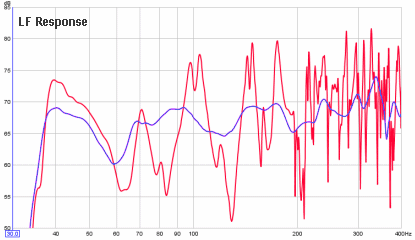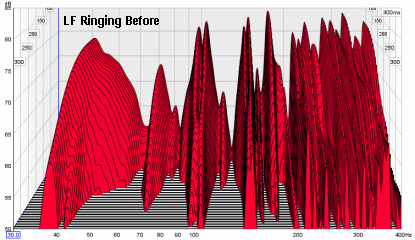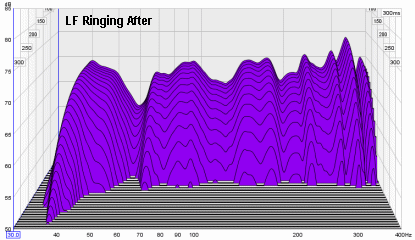Personally I would always measure before deciding whether to invest time and or money in bass traps. Some rooms really don't need any, others need a lot. It really all depends on room size, layout and room construction. Many people don't measure, buy a few bass traps and hope to have magically fixed their room's acoustic issues. Modern acoustic measurement software is not expensive, or difficult to use so there is no excuse really for randomly buying stuff! I have designed and built rooms with zero bass trapping that sounded awesome because the room was non-rectangular, with very flexible walls and we used a bit of EQ. Likewise I have done rooms where fixing the bass with multiple subs and EQ did not deliver the goods because the room was made of brick and hence very stiff. That particular room we had to install 12 bass traps in addition to multiple subs carefully placed and a ton of EQ to get the sound to work. So it very much depends on the circumstances of your room and how it measures.
Corner Bass Traps - Always beneficial?
- Thread starter edorr
- Start date
You are using an out of date browser. It may not display this or other websites correctly.
You should upgrade or use an alternative browser.
You should upgrade or use an alternative browser.
I have yet to see any convincing measurements to support the claims.Myles,
Considering their size they can not affect the bass frequencies significantly, unless they have reasonable mass and your walls are panel type - then they will change the resonance frequency of your room intrinsic bass trap. Or most probably you are just listening to their effect in the medium or high frequencies.
For now, I would not copy what pros do in the studio as he is patterning his work after. They have different needs and hearing sensitivity distinct from consumers and audiophiles alike.
What??
The right location for the EAs will help a lot. See you can place them 25% in from walls. Doing so reduces two of the modes, in essence making them like two subs at those locations. Mike Lavigne has/had them that way.
Mike moved them to 36" from sidewall in his 13' wide room, which is a tad less than 25% (which would be 39"). My room is 160" and I'll start out putting them at 36". This is really pushing the limits of how far into the room I can go.
I'll stick with the plan of sticking my panels diagonally into the corners and measure the impact on bass response before making the call on buying corner traps. Come to think of it, I will stack my two 48" panels in one corner and measure just the speaker in that corner. The traps would go floor to ceiling as well.
Mike moved them to 36" from sidewall in his 13' wide room, which is a tad less than 25% (which would be 39"). My room is 160" and I'll start out putting them at 36". This is really pushing the limits of how far into the room I can go..
Mike's room is about 18' wide...
I'd start by using the first diagram on the EA website.
Mike's room is about 18' wide...
I'd start by using the first diagram on the EA website.
You're right. Actually your studio is 13' wide and you have them at 36" if I recall correctly. The calculator tells me 44" for a 160" wide room. I don't have that much space to I'll start out at 36" and see how it works out.
Nyal: would it be inappropriate for you to name a few such software programs, particularly any that can run on Mac?Personally I would always measure before deciding whether to invest time and or money in bass traps. Some rooms really don't need any, others need a lot. It really all depends on room size, layout and room construction. Many people don't measure, buy a few bass traps and hope to have magically fixed their room's acoustic issues. Modern acoustic measurement software is not expensive, or difficult to use so there is no excuse really for randomly buying stuff! I have designed and built rooms with zero bass trapping that sounded awesome because the room was non-rectangular, with very flexible walls and we used a bit of EQ. Likewise I have done rooms where fixing the bass with multiple subs and EQ did not deliver the goods because the room was made of brick and hence very stiff. That particular room we had to install 12 bass traps in addition to multiple subs carefully placed and a ton of EQ to get the sound to work. So it very much depends on the circumstances of your room and how it measures.
I have a few decent microphones laying around, but would assume that means investing in an interface for them to the computer, or just buying an inexpensive usb type mike.
TIA.
Myles,
Considering their size they can not affect the bass frequencies significantly, unless they have reasonable mass and your walls are panel type - then they will change the resonance frequency of your room intrinsic bass trap. Or most probably you are just listening to their effect in the medium or high frequencies.
What do you consider reasonable mass? They are far from the lightweight room tunes
I believe corner bass traps work by using the laws of physics and are much more efficient than what you show.
No kidding. It's one thing to run simulation software and quite another to actually measure empirically which provides hard proof. Four-inch thick panels can be very effective to well below 100 Hz, especially if you put them in the right places. Using thicker panels is better still. Here's a Before/After graph of a bedroom size space with a mix of 4- and 6-inch bass traps:

You can see a meaningful improvement all the way down to the lowest 40 Hz peak. So good bass traps do indeed work as advertised.
Now, before those with an agenda point out that there were a lot of bass traps to get that much improvement, which is true, even a modest amount of treatment can still make a real improvement to well below 100 Hz. I have a series of measurements of the same small room with varying numbers of traps. If anyone would like to see that I'll be glad to make another graph.
--Ethan
I have always been under the impression (supported by personal experience) that good bass traps work as much by changing delay times and corner reflections as by bass frequency absorption?
This is the second time that Amir has advocated placement at 25% in from the side walls, against all room acoustics recommendations that I have seen (which would generally be something like 20%, 22%, 28% or 33%). Amir, do you have specific justification for that particular recommendation? And when people are talking about distance from side or rear walls, can we assume those measurements are to the acoustic center of the woofer?
This is the second time that Amir has advocated placement at 25% in from the side walls, against all room acoustics recommendations that I have seen (which would generally be something like 20%, 22%, 28% or 33%). Amir, do you have specific justification for that particular recommendation? And when people are talking about distance from side or rear walls, can we assume those measurements are to the acoustic center of the woofer?
No kidding. It's one thing to run simulation software and quite another to actually measure empirically which provides hard proof. Four-inch thick panels can be very effective to well below 100 Hz, especially if you put them in the right places. Using thicker panels is better still. Here's a Before/After graph of a bedroom size space with a mix of 4- and 6-inch bass traps:

You can see a meaningful improvement all the way down to the lowest 40 Hz peak. So good bass traps do indeed work as advertised.
Now, before those with an agenda point out that there were a lot of bass traps to get that much improvement, which is true, even a modest amount of treatment can still make a real improvement to well below 100 Hz. I have a series of measurements of the same small room with varying numbers of traps. If anyone would like to see that I'll be glad to make another graph.
--Ethan
Extremely impressive. +1 for throwing more panels and corner traps in the room.
Changing delay times? Do you mean ringing? If so, yes they do that but only if they actually do something! If you reduce room resonances in frequency domain, the ringing in time domain will decrease. But if the device is not effective there, it won't do much in time domain either.I have always been under the impression (supported by personal experience) that good bass traps work as much by changing delay times and corner reflections as by bass frequency absorption?
It is simple mathematics of sound. If you put the two speakers flush to the side walls, you get two nulls at 25% point. The theory says that if you put the speaker then int he nulls, they vanish. Hence the 25% rule. Now whether that is optimal otherwise, is another matterThis is the second time that Amir has advocated placement at 25% in from the side walls, against all room acoustics recommendations that I have seen (which would generally be something like 20%, 22%, 28% or 33%). Amir, do you have specific justification for that particular recommendation? And when people are talking about distance from side or rear walls, can we assume those measurements are to the acoustic center of the woofer?
It is simple mathematics of sound. If you put the two speakers flush to the side walls, you get two nulls at 25% point. The theory says that if you put the speaker then int he nulls, they vanish. Hence the 25% rule. Now whether that is optimal otherwise, is another matter. I am just talking about bass performance.
The Evolutions will have quite a bit of toe in. Would you still get the null at 25% in this case?
Yes, Bass frequencies don't care about direction that way. Be sure to drive both speakers when testing this principal as obviously does not show up with just one speaker as is the norm in REW and suchThe Evolutions will have quite a bit of toe in. Would you still get the null at 25% in this case?
Also, a small caveat. This is for mono bass which is typical in music. If bass is not mono in the source, then the principal does not work.
It is simple mathematics of sound. If you put the two speakers flush to the side walls, you get two nulls at 25% point. The theory says that if you put the speaker then int he nulls, they vanish. Hence the 25% rule. Now whether that is optimal otherwise, is another matter. I am just talking about bass performance.
I'm sure I'm missing something here, so I hope some room acoustics professionals chime in. Isn't it to provide smoother (flatter) bass response that the 25% and 50% positions are generally advised against?
I saw mention of time-based effects, so here's the same measurement as above shown as Before / After waterfall plots:


Again, you can see real improvement down to very low frequencies. And this is real measurements, not a simulation or "theory." BTW, the traps were flat against the walls, not spaced way out into the room or even straddling corners.
--Ethan


Again, you can see real improvement down to very low frequencies. And this is real measurements, not a simulation or "theory." BTW, the traps were flat against the walls, not spaced way out into the room or even straddling corners.
--Ethan
What do you consider reasonable mass? They are far from the lightweight room tunes
According to the F. A. Everest book, you have roughly to go from 18 to 12 Oz/sq.ft. to change the resonance frequency of a plywood bass trap about 15% - I would say you need about 3 pounds to have a significant effect, considering a 10 sq. ft. area.
Similar threads
- Replies
- 5
- Views
- 556
- Replies
- 69
- Views
- 10K
- Replies
- 2
- Views
- 1K
- Replies
- 40
- Views
- 5K
Members online
- Petrat
- dminches
- wokeuptobose
- Król_Artur
- Bonesy Jonesy
- EuroDriver
- Buggy
- rau
- hopkins
- TST
- bonzo75
- unboxed
- marty
- Erikl
- Bruno Rivademar
- Argonaut
- Toymanmark
- sbnx
- tradubois
- rrohland
- Elliot G.
- Massimo66
- ticktock
- MPW
- Gregadd
- GroovySauce
- lem321
- Hilroy48
- Ugc
- Beltane_sun
- Mike Lavigne
- Robert Young
- Blake
- Hear Here
- Jim in Missouri
- tom539
- andromedaaudio
- Robh3606
- trekpilot
- kennyb123
- R Johnson
- barbz127
- dbeau
- analogsa
- tsaett
- Oracle1974
- respected_ent
- stephen_volker
- Down in Devon
- MD Zenoble
Total: 1,494 (members: 90, guests: 1,404)
| Steve Williams Site Founder | Site Owner | Administrator | Ron Resnick Site Co-Owner | Administrator | Julian (The Fixer) Website Build | Marketing Managersing |

